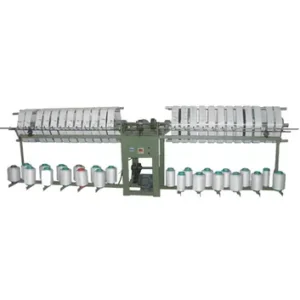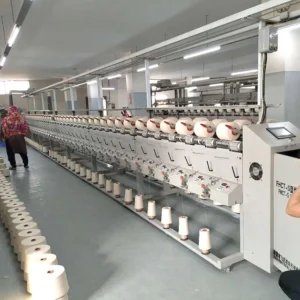The fashion industry is evolving, and sustainability is at the forefront of this transformation.
Traditional dyeing methods often involve harmful chemicals, excessive water usage, and pollution.
However, innovative eco-dyeing techniques are changing the game, offering vibrant colors without compromising the planet.
This article explores the latest advancements in sustainable dyeing, answering key questions about how these methods work, why they matter, and how they benefit both brands and consumers.
What Are Eco-Friendly Dyes Made From?
Plant-Based Dyes
Plant-based dyes are natural colorants derived from various parts of plants, including leaves, roots, and flowers.
These dyes provide a chemical-free alternative to conventional synthetic dyes, appealing to environmentally conscious consumers.
Ingredients such as indigo, turmeric, and beetroot create vibrant, long-lasting colors that are not only beautiful but also biodegradable.
The use of plant-based dyes supports sustainable agriculture, as many of these plants can be grown without harmful chemicals.
Mineral and Clay Pigments
Mineral and clay pigments present another sustainable dyeing option, producing earthy tones that are both visually appealing and environmentally friendly.
These pigments are often sourced responsibly from the earth and require minimal processing, which helps reduce their environmental impact.
The natural hues derived from these materials can create a wide range of colors while promoting sustainable practices in the dyeing industry.
Utilizing mineral and clay pigments further supports a shift toward more eco-conscious manufacturing processes.
Bioengineered Dyes
Recent advancements in dye technology have led to the development of bioengineered dyes derived from bacteria and algae.
These innovative dyes grow rapidly and can significantly reduce the dependency on petroleum-based synthetic dyes that have been traditionally used in the textile industry.
Scientists are exploring the potential of these biological sources to produce vibrant hues with a lower environmental footprint.
Bioengineered dyes not only offer a sustainable alternative but also represent a leap forward in textile innovation, showcasing the possibilities of combining science with eco-friendly practices.
And More:
- How to Reduce Chemical Usage in Textile Manufacturing
- The Benefits of Using Organic Materials in Textile Production
How Do Eco-Dyeing Methods Reduce Water Waste?
Waterless Dyeing Technologies
Eco-dyeing methods are increasingly incorporating new technologies designed to eliminate water usage entirely.
Techniques such as air dyeing and CO₂ dyeing utilize pressurized gas or air to fix colors onto fabrics, effectively removing the need for water in the dyeing process.
This transformative approach not only conserves an essential resource but also minimizes the environmental impact associated with water pollution from traditional dyeing methods.
Closed-Loop Systems
Some dye houses are implementing closed-loop systems that recycle and purify water within the production cycle.
This innovative approach drastically cuts down on wastewater pollution by ensuring that water is reused multiple times before being released into the environment.
In these systems, any contaminants are effectively filtered out, allowing for cleaner water to be reintegrated into the dyeing process.
Closed-loop systems not only minimize the amount of water needed but also reduce the overall environmental impact of dyeing operations, promoting a more sustainable and responsible method of textile production.
Low-Water Dye Processes
Low-water dye processes are another sustainable alternative that significantly reduce water usage compared to traditional immersion dyeing techniques.
Methods such as cold pad batch dyeing rely on applying dye to fabric using a minimal amount of water, thus conserving this precious resource.
These processes not only help address the water scarcity issue but also lead to lower production costs for manufacturers.
Why Are Natural Dyes Better for the Environment?
No Toxic Runoff
Natural dyes offer significant environmental benefits, particularly in terms of toxicity.
This biodegradability prevents the contamination of rivers, lakes, and soil, safeguarding aquatic ecosystems and promoting healthier environments.
The absence of toxic runoff associated with natural dyes contributes to cleaner water sources and reduces the ecological footprint of the dyeing process, making them a more responsible choice for sustainable textile production.
Renewable Sources
The sustainability of natural dyes is further enhanced by their reliance on renewable sources.
Plant-based dyes are derived from crops such as indigo, madder, and turmeric, which can be replanted and harvested annually.
This renewable aspect ensures a continuous supply of raw materials without depleting natural resources.
Choosing natural dyes not only aids in sustainable practices but also fosters a connection to the land and its resources, reinforcing the importance of environmentally friendly production methods.
Lower Carbon Footprint
Natural dyes contribute to a lower carbon footprint compared to their synthetic counterparts.
Since natural dyes avoid petroleum-based chemicals, their production processes emit significantly fewer greenhouse gases.
This reduction in emissions is crucial in the fight against climate change, as the textile industry is a notable contributor to global carbon output.
This shift toward eco-friendly practices aligns with global initiatives aimed at reducing carbon emissions and fostering a healthier planet.
Also Read:
- Reducing Water Usage in Textile Dyeing Processes
- How Can Textile Factories Reduce Their Carbon Footprint?
Can Eco-Dyes Match the Vibrancy of Synthetic Dyes?
Advances in Color Fastness
Recent advancements in the treatment of natural dyes have significantly improved their color fastness.
Modern techniques now enable natural dyes to resist fading, ensuring that they maintain their vibrant appearance over time.
This enhancement allows natural dyes to compete with synthetic options in terms of longevity and brightness.
Wider Color Ranges
Innovative blending techniques have expanded the range of shades available with natural dyes.
These advancements allow artisans and manufacturers to create a broader spectrum of colors, from deep blues and lush greens to bright reds and soft pastels.
The ability to achieve diverse and dynamic hues using natural materials makes eco-dyes increasingly appealing to designers and consumers alike.
This enhanced color palette demonstrates that natural dyes can meet the demands of modern fashion while maintaining their sustainable credentials.
Consumer Preference for Subtle Tones
Many sustainable brands have embraced the unique aesthetics of natural dyes, which often result in slightly muted tones that resonate with eco-conscious buyers.
This preference for subtlety reflects a growing appreciation for the organic and artisanal qualities of natural dyes.
Consumers are increasingly drawn to the individuality and character that these dyes impart to textiles, favoring products that tell a story and showcase environmental responsibility.
What Fabrics Work Best with Eco-Dyeing?
Organic Cotton
Organic cotton is one of the best fabrics for eco-dyeing due to its excellent dye absorption properties.
This natural textile allows for vibrant and durable colors, making it a popular choice among sustainable brands.
The absence of synthetic pesticides and fertilizers in organic cotton cultivation ensures that the fibers are clean and ready to absorb natural dyes effectively.
Linen and Hemp
Linen and hemp are highly compatible with eco-dyes, enhancing their natural appeal and sustainability.
Both fabrics are derived from plants, making them ideal candidates for natural dyeing processes.
Linen, known for its breathability and strength, readily accepts dyes, resulting in rich, earthy tones that complement its texture.
Hemp, with its robust fibers, also absorbs natural dyes well, producing colors that retain their integrity over time.
Tencel and Bamboo
Sustainable cellulose fibers like Tencel and bamboo are excellent options for eco-dyeing, as they take dye efficiently and effectively.
Tencel, made from sustainably sourced wood pulp, offers a smooth surface that enhances dye adherence, resulting in vibrant colors.
Bamboo fabric, known for its softness and breathability, also absorbs natural dyes well, making it suitable for low-impact coloring methods.
And More:
- The Impact of Automation on Reducing Carbon Emissions in Textile Factories
- Top 5 Yarn Twisting Machine Manufacturers in China
How Do Eco-Dyes Impact Clothing Durability?
Gentler on Fibers
Eco-dyes have a gentler effect on fibers compared to harsh synthetic dyes, helping to preserve the strength and integrity of the fabric.
Traditional synthetic dyeing methods can weaken fibers through aggressive chemical processes, leading to premature wear and tear.
This preservation of fabric strength results in clothing that lasts longer, reducing the need for frequent replacements and supporting a more sustainable approach to fashion.
Fade-Resistant Treatments
Recent advancements in sealing techniques have improved the fade-resistance of eco-dyed fabrics.
These treatments help maintain color integrity even after multiple washes, ensuring that garments retain their vibrant hues over time.
This development is particularly important for consumers who seek longevity in their clothing, as it minimizes the fading often associated with traditional dyeing processes.
Long-Term Wear Benefits
Clothing dyed with eco-friendly methods often provides long-term wear benefits, including enhanced comfort and breathability.
Natural dyes can contribute to a softer hand feel, making garments more pleasant to wear against the skin.
As these garments age, they typically become softer and more comfortable, creating a positive wearing experience that encourages consumers to embrace sustainable fashion choices over time.
Are Eco-Dyed Clothes More Expensive?
Initial Cost vs. Long-Term Value
Eco-dyed garments often come with a higher initial cost compared to conventionally dyed clothing.
This price increase can be attributed to several factors, including the use of natural materials, ethical labor practices, and sustainable production methods.
While the upfront investment may seem daunting, the durability and quality of eco-dyed products tend to justify the price in the long run.
Scaling Low-Impact Dyeing
As consumer demand for sustainable fashion continues to grow, the scaling of low-impact dyeing techniques is becoming more feasible.
With increased interest in eco-friendly products, manufacturers are optimizing their processes, leading to decreased production costs for eco-dyed textiles.
The more brands adopt these sustainable practices, the more competitive the pricing will become, making eco-dyeing accessible to a wider audience.
Consumer Willingness to Pay More
Recent studies indicate that shoppers are increasingly willing to pay a premium for environmentally responsible fashion.
Many consumers now view eco-dyed clothing as not just a fashion choice but also a moral one, aligning their purchases with their values.
This willingness to invest in responsible fashion could encourage more brands to adopt eco-dyeing practices, further driving the market toward sustainability.
Also Read:
How to Transition to Renewable Energy in Textile Production
How Can Brands Transition to Eco-Dyeing?
Partnering with Sustainable Suppliers
A successful transition to eco-dyeing often begins with brands forming partnerships with dye houses that specialize in low-impact dyeing methods.
Collaborating with suppliers who prioritize ethical production ensures that the entire supply chain aligns with sustainability goals.
These partnerships can provide brands with access to innovative dyeing techniques and high-quality natural materials, facilitating a smoother transition to eco-friendly practices.
Gradual Implementation
Transitioning to eco-dyeing does not have to happen all at once. Brands can adopt a gradual implementation strategy, starting with partial eco-dyeing in some product lines before fully committing to sustainable methods.
This phased approach allows companies to assess the impact on their supply chains, production processes, and customer responses without causing significant disruptions.
Gradual implementation also provides opportunities for brands to learn and adapt, ensuring that they can successfully incorporate eco-dyeing into their overall strategy over time.
Educating Consumers
Educating consumers about the benefits of eco-dyes is crucial for building trust and encouraging sustainable purchasing decisions.
Transparent marketing efforts that highlight the environmental and ethical advantages of eco-dyed clothing can resonate with consumers who prioritize responsible fashion.
Providing information about the sourcing of materials, the dyeing process, and the long-term benefits of eco-dyed products can empower consumers to make informed choices.
Conclusion
Eco-dyeing has evolved from a niche trend into a promising future for fashion.
With advancements in natural pigments, innovative water-saving techniques, and durable applications, sustainable dyeing effectively meets both aesthetic desires and environmental responsibilities.
Brands that embrace eco-dyeing not only reduce their ecological impact but also respond to the growing demand for responsible fashion.
Consumers who choose eco-dyed clothing play an essential role in fostering a cleaner, greener industry, showcasing how every vibrant hue contributes to a more sustainable future.












